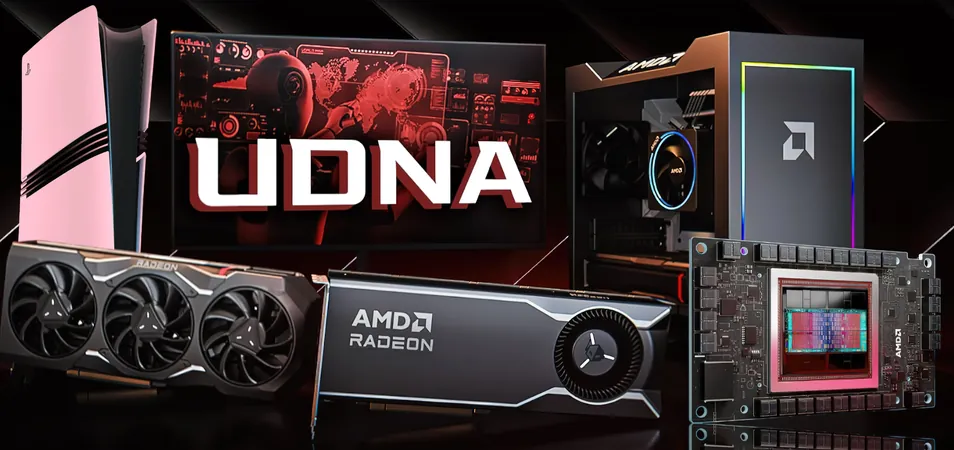
AMD's Groundbreaking UDNA "Radeon" Gaming GPUs Poised for Mass Production by Q2 2026 – What This Means for the Future of Gaming and the PS6
2024-11-19
Author: Amelia
A New Era for AMD's GPU Lineup
AMD is consolidating its graphics processing units under a singular architecture known as UDNA. This transformative shift will merge the best features of the existing CDNA (designed for high-performance computing) and RDNA (geared towards gaming) lineups into a cohesive framework. The UDNA architecture is expected to succeed the RDNA 4 and CDNA 4 families, marking a clean slate for the company's GPU division.
Future-Proofing Gaming Hardware
According to credible sources from the Chiphell Forum, key details surrounding the UDNA lineup suggest that both the AMD Instinct MI400 series and the anticipated Radeon RX 9000 series GPUs will utilize this new architecture. While the RX 9000 series branding has not been officially confirmed, AMD has a history of aligning new branding with fresh architecture launches.
Interestingly, the UDNA architecture will feature an ALU (Arithmetic Logic Unit) design reminiscent of the earlier GCN (Graphics Core Next) series, indicating that AMD is willing to blend past successes with innovative improvements. This architecture is designed to support both AI applications and high-performance gaming, accommodating the diverse needs of today’s users.
PlayStation 6 and Beyond
The upcoming PlayStation 6 is set to leverage the UDNA architecture, with speculation surrounding whether Sony will utilize AMD’s Zen 4 or the forthcoming Zen 5 CPUs. This synergy between AMD and Sony could lead to enhanced performance, offering gamers a next-gen experience characterized by superior graphics and faster processing.
Moreover, rumors suggest Microsoft's forthcoming handheld console may face a pivotal decision between using Qualcomm or AMD chips. Given AMD's recent advancements in the handheld gaming segment, a partnership with AMD may offer a competitive edge.
Generational Shift in Gaming Technology
AMD's exit from the enthusiast GPU segment has raised questions about how the first generation of UDNA will position the company against NVIDIA, a powerhouse in the gaming graphics market. The success of the upcoming RDNA 4 and UDNA GPUs will be crucial in determining AMD's trajectory in the face of tough competition.
Furthermore, AMD is reportedly developing an AI-powered FidelityFX Super Resolution (FSR) solution, rivaling NVIDIA's celebrated DLSS technology. Such innovations will be critical in enhancing gaming experiences through improved frame rates and graphics fidelity.
Conclusion: A Compelling Future on the Horizon
As the gaming landscape evolves, AMD’s UDNA architecture promises to usher in a new era of high-performance graphics, catering to both gamers and developers alike. With the anticipated mass production set for Q2 2026, the excitement is palpable. Enthusiasts eagerly await a preview of what the future holds for both AMD and gaming consoles like the PS6. Stay tuned for more updates as we continue to follow these developments that are sure to reshape the world of video gaming!









 Brasil (PT)
Brasil (PT)
 Canada (EN)
Canada (EN)
 Chile (ES)
Chile (ES)
 España (ES)
España (ES)
 France (FR)
France (FR)
 Hong Kong (EN)
Hong Kong (EN)
 Italia (IT)
Italia (IT)
 日本 (JA)
日本 (JA)
 Magyarország (HU)
Magyarország (HU)
 Norge (NO)
Norge (NO)
 Polska (PL)
Polska (PL)
 Schweiz (DE)
Schweiz (DE)
 Singapore (EN)
Singapore (EN)
 Sverige (SV)
Sverige (SV)
 Suomi (FI)
Suomi (FI)
 Türkiye (TR)
Türkiye (TR)